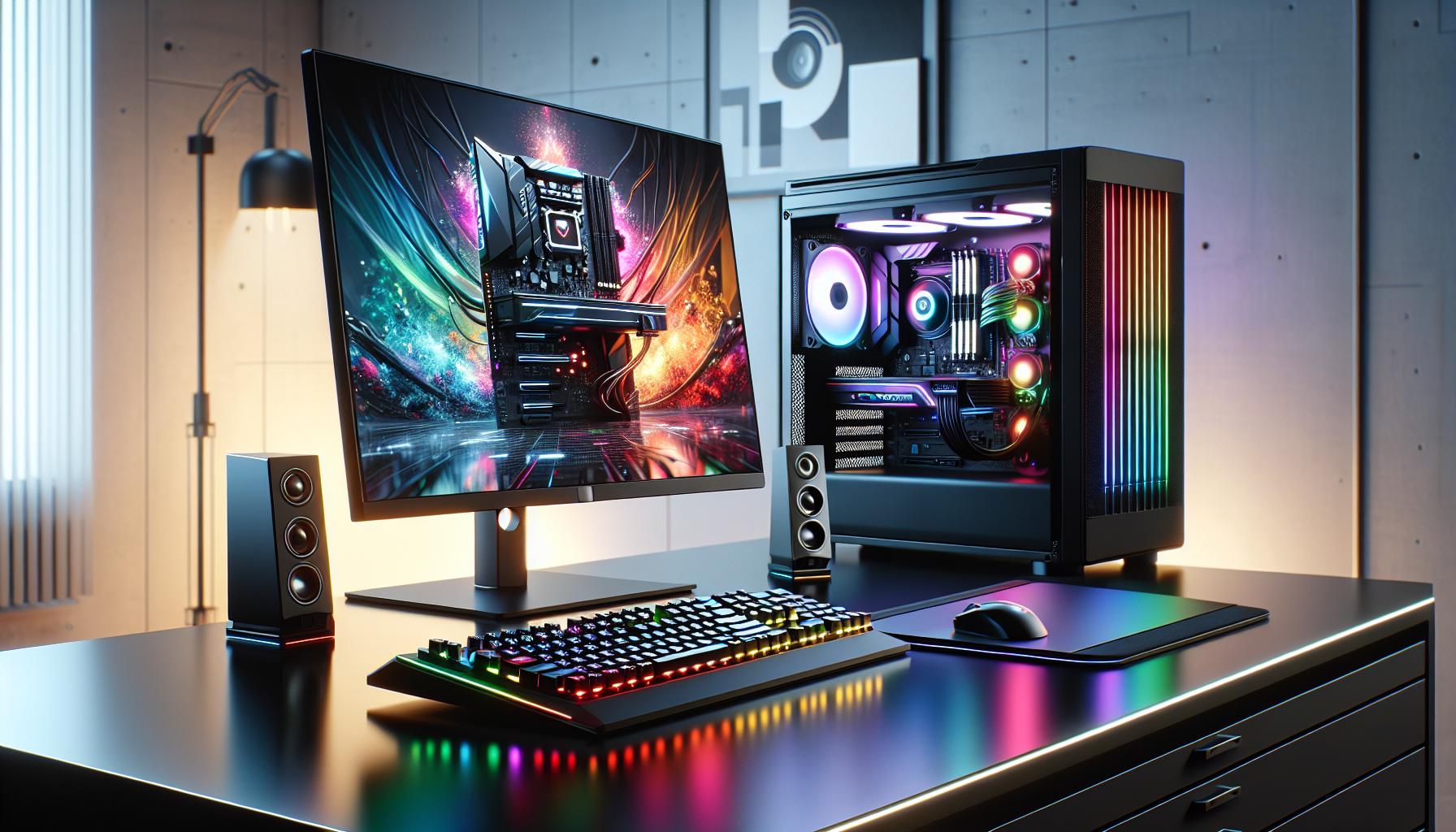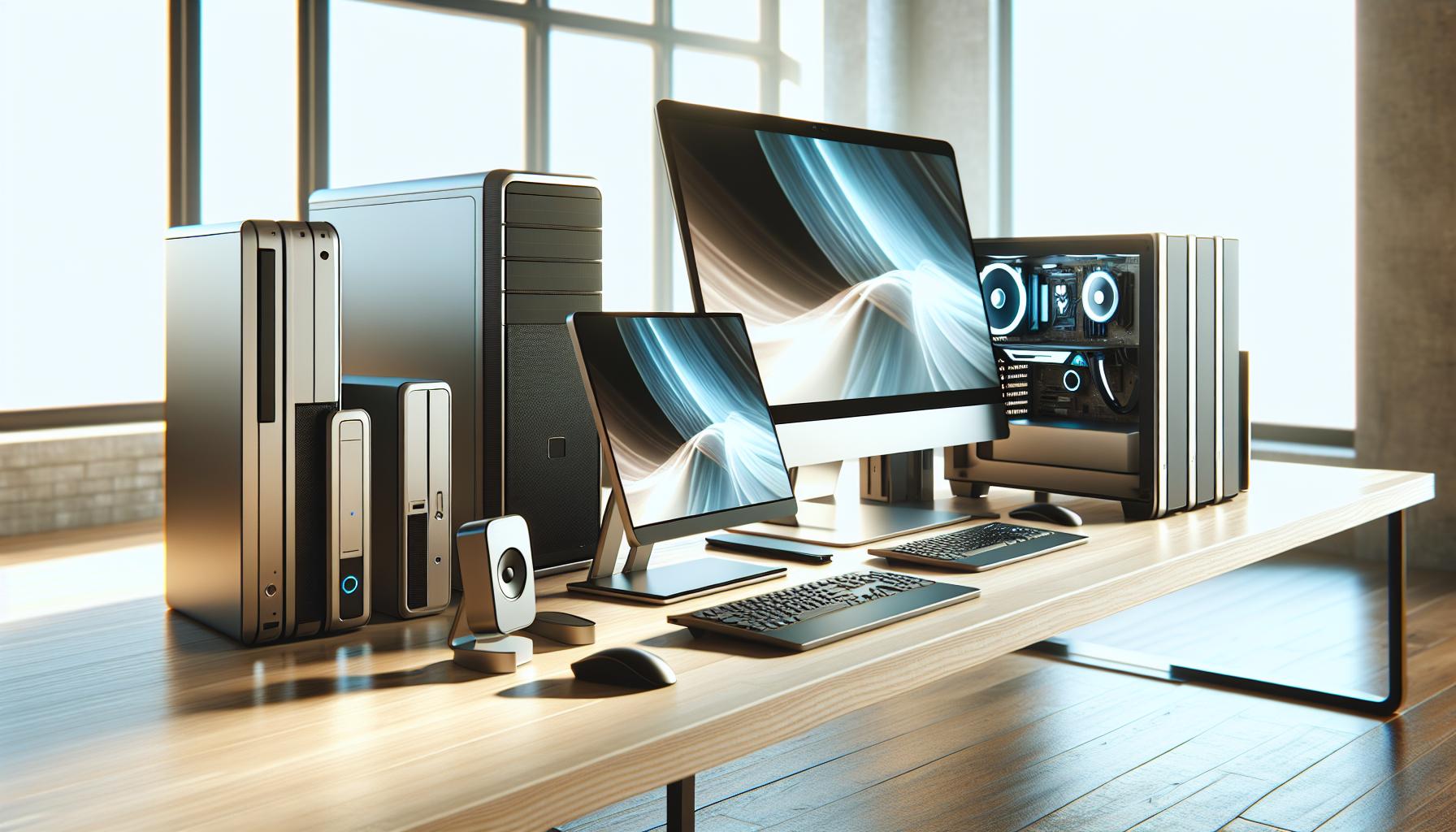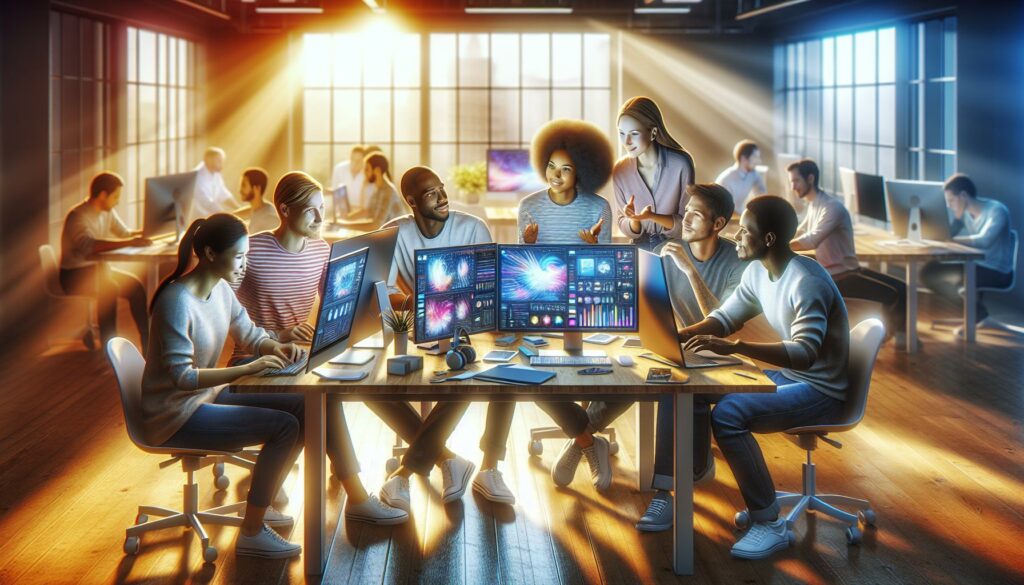As a tech enthusiast, I’ve noticed that many people use the term what does pc stand for in computers. PC stands for Personal Computer, and it’s a term that revolutionized the way we think about computing devices.
I remember when computers were massive machines that filled entire rooms and were only accessible to large organizations. The introduction of PCs in the late 1970s changed everything by bringing computing power directly to individuals’ homes and offices. Today, these machines have become an essential part of our daily lives, whether we’re working, gaming, or staying connected with loved ones.
Key Takeaways
- what does pc stand for in computers, a term popularized by IBM in 1981 with the release of their model 5150, revolutionizing individual computing
- The evolution of PCs transformed from room-sized mainframes to modern compact devices, making computing accessible and affordable for personal use
- Personal computers consist of essential hardware (CPU, RAM, storage) and software (operating system, drivers) components working together for functionality
- Modern PCs come in various form factors, including desktop towers, laptops, all-in-one systems, and mini PCs, each designed for specific use cases
- The future of personal computing focuses on quantum integration, AI acceleration, and enhanced reality interfaces, promising significant performance improvements
What Does PC Stand For In Computers
A personal computer (PC) is a microcomputer designed for individual use with complete functionality for tasks like word processing, internet browsing, gaming, and data analysis. The term emphasizes the shift from mainframe computing to individual computing devices.
Origins of the Term PC
The term “PC” originated in 1981 when IBM released its first personal computer model 5150. Before this milestone, companies like Apple, Commodore and Tandy produced microcomputers, but IBM’s entry standardized the term “PC” in computing vocabulary. The distinction of “personal” highlighted the computer’s role as a single-user device, contrasting with multi-user mainframes and minicomputers of the era.
IBM’s Role in PC History
IBM transformed the computer industry by introducing the IBM PC with an open architecture design. This strategic decision allowed other manufacturers to create compatible machines, known as “IBM PC clones” or “IBM compatibles.” The company’s choice of Intel’s 8088 microprocessor and Microsoft’s MS-DOS operating system established industry standards that shaped modern computing. Key specifications included:
| Component | Specification |
|---|---|
| Processor | Intel 8088 at 4.77 MHz |
| Memory | 16KB to 256KB RAM |
| Storage | 160KB floppy drive |
| Display | Monochrome or CGA graphics |
| Price | $1,565 base model (1981) |
The IBM PC’s architecture became the foundation for today’s Windows-based computers, creating a standardized platform for software development and hardware manufacturing.
Evolution of Personal Computers

Personal computers transformed from room-sized mainframes to compact desktop machines through significant technological advancements. This evolution spans multiple decades marked by groundbreaking innovations in processing power miniaturization.
From Mainframes to Desktop Computers
The transition from mainframes to desktop computers occurred between 1975 and 1981, starting with the Altair 8800 kit computer. IBM’s System/360 mainframes cost $2.5 million in 1965 while the first Apple I computer sold for $666.66 in 1976, demonstrating the dramatic shift in computing accessibility. Key developments included:
- Introduction of Intel’s 4004 microprocessor in 1971, measuring 1/8th x 1/6th inch
- Launch of Commodore PET BASIC computer in 1977 at $795
- Release of Apple II in 1977 with integrated keyboard display
- Development of CP/M operating system in 1974 for microcomputers
- Tower Desktops: Full-sized ATX cases measuring 18x8x24 inches
- Small Form Factor (SFF): Compact units under 12 inches in height
- All-in-One PCs: Integrated display systems like the 24-inch iMac
- Mini PCs: Ultra-compact systems like Intel NUC at 4×4 inches
- Gaming Laptops: Portable powerhouses with dedicated GPUs
- Ultrabooks: Thin laptops under 0.8 inches thick
| Form Factor | Typical Size (inches) | Average Weight (lbs) |
|---|---|---|
| Tower Desktop | 18x8x24 | 20-30 |
| SFF Desktop | 12x6x12 | 10-15 |
| All-in-One | 24x18x8 | 12-18 |
| Mini PC | 4x4x2 | 1-2 |
| Gaming Laptop | 15x10x1.5 | 4-8 |
| Ultrabook | 13x9x0.8 | 2-3 |
Key Components of a Personal Computer

A personal computer integrates essential hardware elements with software systems to create a functional computing device. These components work together to process data execute programs conduct calculations.
Hardware Elements
The physical components of a PC include:
- Central Processing Unit (CPU): Intel Core i3 i5 i7 processors or AMD Ryzen series handle computational tasks
- Random Access Memory (RAM): 4GB to 64GB modules store temporary data for quick access
- Storage Devices: SSD drives (250GB-2TB) or HDD drives (1TB-8TB) for permanent data storage
- Motherboard: ATX or Micro-ATX boards connect all components through circuits paths
- Power Supply Unit: 450W to 1000W units provide electrical power to components
- Graphics Card: Integrated Intel UHD or dedicated NVIDIA RTX AMD Radeon cards process visual data
- Input/Output Ports: USB 3.0 HDMI DisplayPort Ethernet audio jacks enable peripheral connections
- Operating System: Windows 11 macOS Linux distributions manage hardware resources
- Device Drivers: Manufacturer-specific programs enable hardware component functionality
- System Utilities: Disk cleanup antivirus task manager monitor system performance
- Application Software: Word processors web browsers media players gaming applications
- BIOS/UEFI: Firmware interfaces initialize hardware during startup
- File Systems: NTFS FAT32 exFAT organize store retrieve data
- Security Software: Firewalls encryption tools protect system data
| Component Type | Common Specifications | Typical Price Range |
|---|---|---|
| CPU | 2.0-5.0 GHz | $150-$700 |
| RAM | 4-64 GB | $30-$400 |
| Storage | 250GB-8TB | $50-$1000 |
| Graphics Card | 2-24GB VRAM | $200-$2000 |
Types of Personal Computers

Personal computers come in distinct form factors designed for different use cases. Each type offers unique advantages in terms of performance, portability, and functionality.
Desktop PCs
Desktop PCs feature stationary components housed in a case that sits on or under a desk. These systems include:
- Tower Cases: Full-sized enclosures (18-24 inches tall) with maximum expansion options
- Mid-Tower Cases: Compact designs (14-18 inches tall) balancing space and functionality
- Small Form Factor: Mini towers (12 inches or less) ideal for limited spaces
- All-in-One PCs: Integrated displays and components in a single unit (21-27 inch screens)
Key specifications for modern desktop PCs:
| Component | Common Range |
|---|---|
| CPU Cores | 4-16 cores |
| RAM | 8-32 GB |
| Storage | 256GB-2TB |
| Power Supply | 450-850W |
Laptop PCs
Laptop PCs integrate all components into a portable clamshell design. Common categories include:
- Ultrabooks: Thin (0.6-0.7 inches) lightweight devices weighing 2-3 pounds
- Gaming Laptops: Performance-focused systems (1-1.5 inches thick) weighing 4-7 pounds
- Business Laptops: Durable builds with enhanced security features (3-4 pounds)
- 2-in-1 Convertibles: Touchscreen displays with 360-degree hinges
- Budget Laptops: Basic functionality at lower price points
| Feature | Typical Range |
|---|---|
| Screen Size | 13-17 inches |
| Battery Life | 4-12 hours |
| Weight | 2-7 pounds |
| Thickness | 0.6-1.5 inches |
The Future of Personal Computing
Personal computing advances through three key technological developments: quantum computing integration, artificial intelligence acceleration, and enhanced reality interfaces.
Quantum computing brings processing capabilities to personal computers through hybrid systems that combine traditional chips with quantum components. IBM’s Eagle processor demonstrates this integration by incorporating quantum circuits into conventional PC architectures, enabling complex calculations at unprecedented speeds.
AI acceleration transforms PCs through dedicated neural processing units (NPUs):
- Intel’s Neural Compute Stick processes AI workloads at 4 TOPS (Trillion Operations Per Second)
- Apple’s M1 chip delivers 11 TOPS of AI performance
- NVIDIA’s RTX 4090 achieves 1,321 TOPS for AI tasks
Enhanced reality interfaces merge physical and digital experiences:
- Holographic displays project 3D images with 8K resolution per eye
- Neural interfaces enable direct brain-computer communication at 1,000 bits per second
- Haptic feedback systems provide tactile responses with 1ms latency
| Component | Current Performance | Projected 2025 Performance |
|---|---|---|
| CPU Speed | 5.8 GHz | 7.5 GHz |
| RAM | 64 GB DDR5 | 256 GB DDR6 |
| Storage | 4 TB NVMe | 16 TB NVMe |
| AI Processing | 1,321 TOPS | 5,000 TOPS |
These advancements create modular computing systems that adapt to user needs through reconfigurable hardware components. The integration of biological interfaces enhances human-computer interaction, while sustainable computing initiatives reduce power consumption by 75% through advanced chip designs.
PC Tech
The history and evolution of personal computers showcase one of technology’s most transformative journeys. From IBM’s groundbreaking PC to today’s diverse computing landscape I’ve seen the term “PC” become synonymous with personal computing freedom and innovation.
As we look toward quantum integration AI acceleration and enhanced reality interfaces I’m excited about the future of PCs. These machines that started as simple personal computers have evolved into powerful tools that shape our digital lives in countless ways.
The term “PC” represents more than just its literal meaning – it stands as a symbol of computing democratization that forever changed how we interact with technology.

